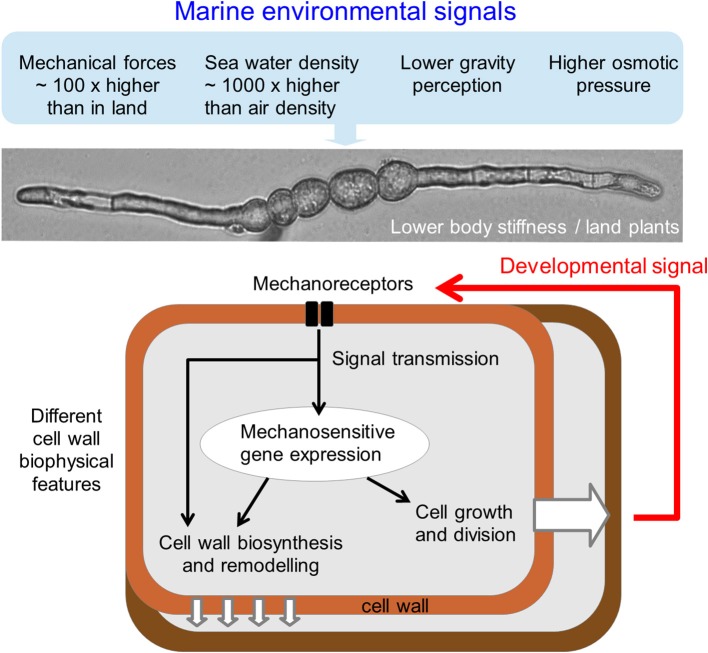Figure 3.
Schematic representation of cell responses to mechanical signals. The specific environmental and cellular features of marine brown algae likely make molecular responses to mechanical signals different from land plants. In addition to the higher external osmotic pressures, mechanical forces and density and to the lower gravity perception, brown algal cell wall composition, structure, and physical properties differ from land plants. Nevertheless, similarly to land plants, primary molecular factors involved in perception and response to mechanical signals likely include transmembrane mechanoreceptors and signaling pathway factors. Resulting activation of the nuclear (mitosis and gene expression) and cell wall (biosynthesis and remodeling) machineries will allow relevant physiological and mechanical adjustment to the external mechanical constraints. Modification of the spatial and biophysical extracellular conditions due to the growth within the algal thallus will also likely generate mechanical signals perceived by similar or distinct mechanosensors.

